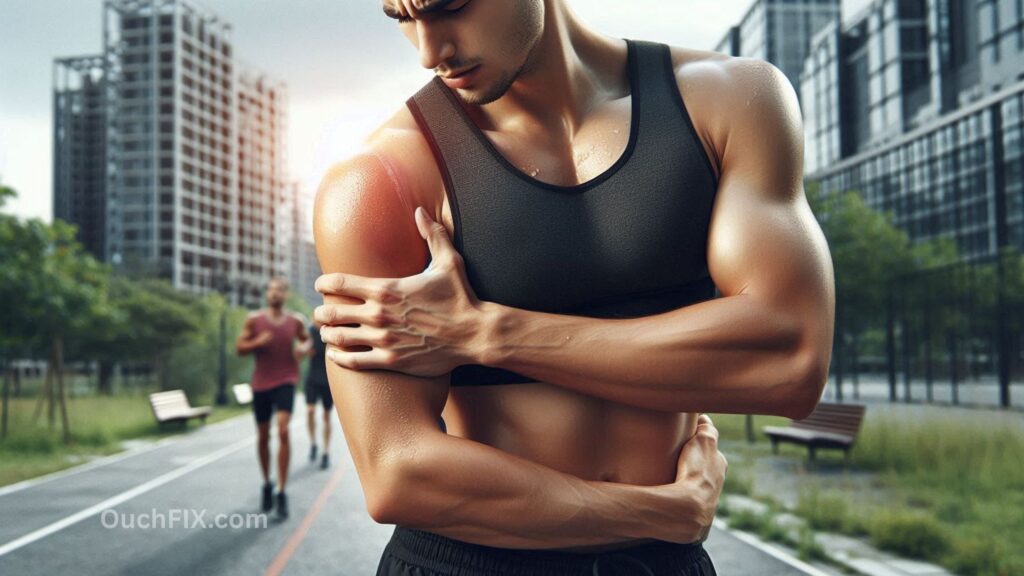Joint pain is one of the most common health complaints worldwide. It can affect anyone — from young athletes recovering from an injury to older adults dealing with arthritis. The pain may be temporary and mild, or it can be chronic and severe enough to interfere with daily life.
While arthritis is often the main culprit, joint pain can result from many different conditions. The good news? With the right approach, most people can find relief and get back to their routines. This guide breaks down the causes, treatments, and effective ways to manage joint pain.
So, What is Joint Pain?
Joint pain refers to discomfort, stiffness, or soreness in one or more joints — the spots where two bones meet. The pain may come and go or persist daily. People describe it in different ways:

- A dull ache
- A sharp, stabbing pain
- Throbbing or burning sensations
- Grinding or popping feelings when moving
Mornings can be especially tough. Many people notice stiffness upon waking that eases with movement. But too much activity may make the pain worse.
Joint pain doesn’t just affect comfort; it can make simple tasks like walking, climbing stairs, or opening jars much harder. In severe cases, it significantly lowers quality of life. That’s why managing pain isn’t only about easing discomfort — it’s about restoring function and independence.
Common Causes of Joint Pain

There are more than 100 types of arthritis, but arthritis isn’t the only cause of joint pain. Here are the most common culprits:
- Osteoarthritis – The most widespread type. It happens when cartilage (the cushioning tissue) wears down, often after age 45.
- Rheumatoid Arthritis (RA) – An autoimmune disease that causes chronic inflammation, stiffness, and swelling, particularly in small joints like hands and wrists.
- Gout – Triggered by uric acid buildup, gout often causes sudden, severe pain in the big toe.
- Bursitis – Inflammation of fluid-filled sacs (bursae) from overuse, often in hips, elbows, or knees.
- Tendinitis – Irritation of tendons connecting muscles to bones, common in athletes or people with repetitive jobs.
- Injury-related pain – Sprains, fractures, or dislocations can leave lasting discomfort.
- Other causes – Infections, autoimmune conditions, skin rashes, or fevers may also affect the joints.
👉 Want to learn how nutrition impacts healing? Healthline explains the role of diet in recovery.

Also Read: How does Nutrition Influence the Recovery Process?
Who’s at Risk for Joint Pain?
Some people are more likely to develop joint pain due to lifestyle, health history, or age. You’re at higher risk if you:
- Have arthritis or chronic conditions
- Are overweight or obese (extra weight adds stress to weight-bearing joints)
- Have past joint injuries (like ACL tears or fractures)
- Perform repetitive movements for work or sports
- Experience high stress, anxiety, or depression
- Are over 45 — aging naturally wears down joint tissue
How Is Joint Pain Treated?

There’s no single “cure,” but treatments can reduce pain, improve mobility, and prevent further damage. The right plan depends on the cause, severity, and your overall health.
At-Home Remedies
- Heat & Cold Therapy: Heating pads relax stiff muscles, while ice packs reduce swelling.
- Warm Baths: A soak in warm water can loosen stiff joints and relax muscles.
Exercise & Movement
- Low-Impact Activities: Swimming, walking, and cycling keep joints flexible without adding stress.
- Stretching: Gentle stretches improve range of motion. Always check with a doctor before starting a new routine.
👉 Related read: Stretching Routines and Recovery.
Weight Management
Carrying extra weight increases strain on hips, knees, and spine. Losing even 5–10% of body weight can make a big difference in reducing pain.
Medication
- OTC pain relievers: Acetaminophen, ibuprofen, or naproxen may help.
- Prescription options: Stronger anti-inflammatories, disease-modifying drugs (for RA), or antidepressants for chronic pain.
Topical Treatments
Creams, gels, and patches containing menthol, capsaicin, or diclofenac can be applied directly over sore joints for relief.
Supplements
Some people try glucosamine, chondroitin, or turmeric. Evidence is mixed, so it’s best to consult your doctor before use.

Also Read: How can Stretching Routines Enhance Post‑Exercise Recovery?
Other Non-Surgical Options
Corticosteroid injections for inflammation to treatments differently. What works for one person might not work for another — so follow your provider’s advice and tell them about any side effects.
- Braces, canes, or orthotic inserts
- Physical or occupational therapy
Surgical Options for Joint Pain
If conservative treatments don’t help, surgery may be recommended:

- Arthroscopy – Minimally invasive procedure using a camera to clean and repair joint tissue.
- Joint Fusion – Fuses bones together to prevent painful movement (common in ankles, spine, hands).
- Osteotomy – Cuts and reshapes bones to relieve pressure on joints.
- Joint Replacement – A damaged joint is replaced with an artificial implant (common for hips, knees, and shoulders).
Many people report long-term relief after replacement surgeries, although recovery takes time.
When Should You See a Doctor?
Joint pain can range from annoying to unbearable. If the pain is making everyday life hard, it’s time to get it checked out.Occasional soreness is normal, but see a healthcare provider if you notice:

- Severe swelling, redness, or warmth in a joint
- Fever along with joint pain
- Unexplained weight loss
- Difficulty walking or moving the joint
- Pain that persists despite home care
Your doctor may order blood tests, X-rays, or MRIs to find the root cause. Early diagnosis often leads to better outcomes.

Also Read: What Recovery Techniques Reduce Muscle Soreness Effectively?
A Final Thought
Joint pain can be frustrating, but it doesn’t have to control your life. From lifestyle changes to medical treatments, there are many options to help you manage symptoms and maintain mobility.
Remember: every case is different. What works for one person might not work for another. The key is finding a personalized treatment plan with the help of a healthcare professional. Relief is possible — and you deserve to get back to doing the things you love.
Frequently Asked Questions (FAQs)
Q1. What’s the difference between arthritis and joint pain?
Arthritis is one of the leading causes of joint pain, but not all joint pain is arthritis. Injuries, infections, and overuse can also trigger pain.
Q2. Can exercise make joint pain worse?
High-impact activities may aggravate pain, but low-impact exercises like swimming or yoga often improve flexibility and strength.
Q3. Are supplements safe for joint pain?
Some people benefit from glucosamine or turmeric, but research is mixed. Always consult your doctor before taking supplements.
Q4. Does weather affect joint pain?
Yes, some people notice more stiffness or discomfort when the weather is cold or damp, though science hasn’t fully explained why.
Q5. Is surgery always necessary for severe joint pain?
No, surgery is a last resort. Many patients manage pain with therapy, medications, and lifestyle changes before considering surgical options.






